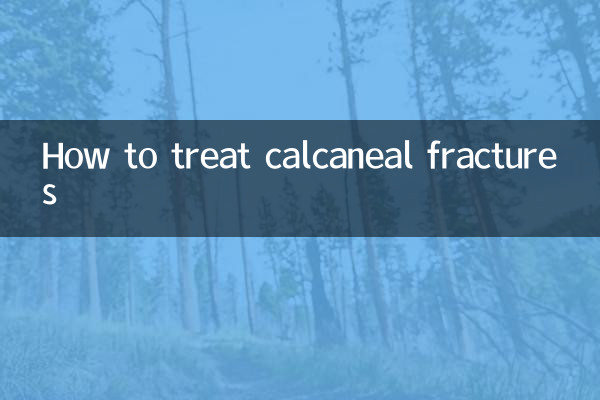How to treat calcaneal fractures
Calcaneal fracture is one of the common injuries of the foot, mostly caused by falls from heights, traffic accidents or sports injuries. With the advancement of medical technology, the treatment methods for calcaneal fractures are also constantly optimized. This article will combine the hot topics and hot content on the Internet in the past 10 days to introduce you to the treatment methods of calcaneus fractures in detail and provide structured data for reference.
1. Classification of calcaneal fractures

Calcaneal fractures can be divided into the following categories based on the location and severity of the fracture line:
| Classification | Description |
|---|---|
| intra-articular fracture | Fracture lines involving the calcaneal articular surface often require surgical treatment |
| extra-articular fracture | The fracture line does not involve the articular surface and is usually treated conservatively. |
| comminuted fracture | The calcaneus is broken into multiple pieces, making treatment difficult |
2. Treatment methods for calcaneal fractures
Depending on the type of fracture and the patient's condition, treatment methods can be divided into two types: conservative treatment and surgical treatment.
1. Conservative treatment
Suitable for non-displaced or slightly displaced extra-articular fractures. Specific measures include:
| Treatment | Description |
|---|---|
| plaster immobilization | Usually immobilized for 4-6 weeks, avoiding weight bearing during this period |
| drug treatment | Use NSAIDs to relieve pain and swelling |
| Rehabilitation training | Progressive rehabilitation after cast removal |
2. Surgical treatment
For obvious displacement, damage to the articular surface, or comminuted fractures, surgical treatment is usually required:
| surgical method | Indications | recovery time |
|---|---|---|
| Open reduction and internal fixation | Intra-articular fracture, significant displacement | 8-12 weeks |
| minimally invasive surgery | Partial intra-articular fracture | 6-8 weeks |
| Arthrodesis | Severe comminuted fracture | 12-16 weeks |
3. Rehabilitation precautions
Regardless of the treatment modality, the recovery phase is critical:
| recovery stage | Things to note |
|---|---|
| Acute phase (0-2 weeks) | Elevate the affected limb, apply ice to reduce swelling, and avoid weight bearing |
| Mid-term (2-6 weeks) | Begin passive activities to prevent joint stiffness |
| Late period (after 6 weeks) | Gradually bear weight and perform muscle strength training |
4. Latest Treatment Progress
According to the medical hot spots in the past 10 days, the treatment of calcaneal fractures has the following new trends:
1.3D printing technologyIncreasingly used in surgical planning of calcaneal fractures to improve surgical accuracy.
2.bioabsorbable materialsBegin to be used for internal fixation to avoid secondary surgical removal.
3.Enhanced recovery after surgery (ERAS)The concept is promoted in the treatment of calcaneal fractures and shortens the length of hospital stay.
5. Preventive measures
The keys to preventing calcaneal fractures are:
1. Wear protective footwear when engaging in high-risk activities
2. Osteoporosis patients should regularly supplement calcium and vitamin D
3. Strengthen balance training to prevent falls
Treatment of calcaneal fractures requires an individualized plan based on the specific situation. It is recommended that patients choose appropriate treatment methods under the guidance of professional orthopedic surgeons and strictly adhere to the rehabilitation plan to obtain the best treatment results.

check the details

check the details